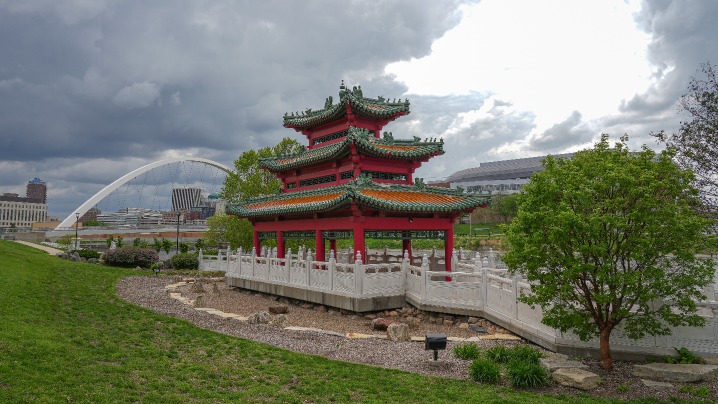
Iconic America: Iowa's Iconic Landmarks and Symbols
by Bryon Houlgrave
When you think of Iowa, what imagery comes to mind? Check out our list of some of the landmarks and other imagery our audience has identified as iconic to the state. See more iconic imagery and learn more about the new PBS show Iconic America.
Black Hawk Bridge
Lansing
The Black Hawk Bridge that spans the Mississippi River between Lansing, Iowa, and Crawford County, Wisconsin, is among the rarest of North American bridges. The riveted cantilever through truss bridge is Iowa’s northernmost bridge that crosses the Mississippi River, and is dubbed a singing bridge due to the sound car tires make as they cross the steel grate floor. Initially conceptualized by a pair of Lansing businessmen in 1898, construction on the 1,127-foot bridge didn’t begin until 1929. During a christening ceremony attended by both Iowa governor John Hammill and Wisconsin governor Walter J. Kohler, Sr., the bridge was named to honor Black Hawk, the warrior and war leader of the Sauk tribe. Due to a low sufficiency rating, the Iowa Department of Transportation approved reconstruction of the bridge, which will start in the fall of 2023 or spring of 2024.
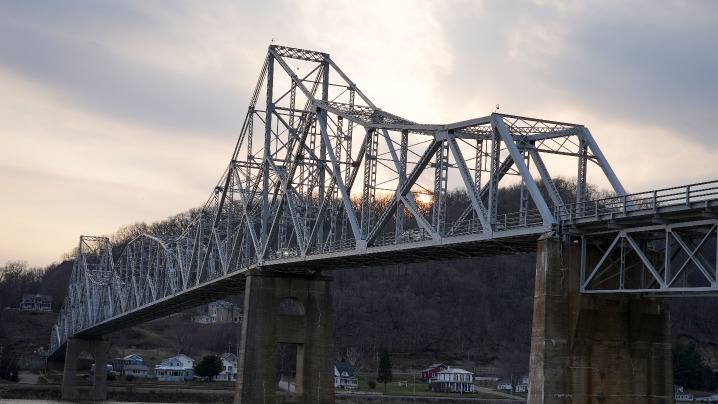
Grotto of the Redemption
West Bend
Believed to be the largest Grotto in the world, the Grotto of Redemption was built over the span of 42 years. It draws more than 100,000 visitors each year. The Grotto of the Redemption was added to the U.S. National Register of Historic Places in 2001.
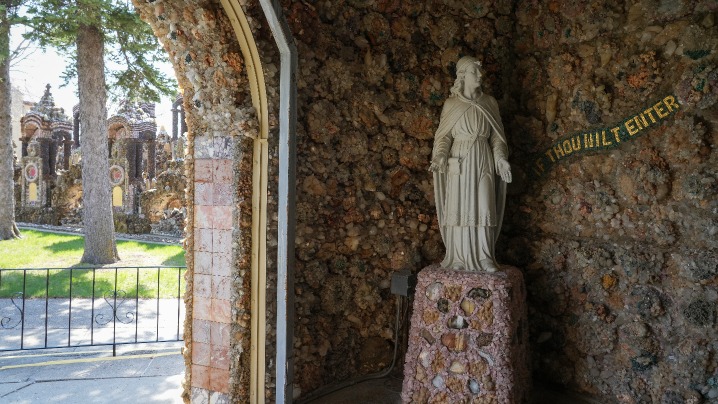
Neal Smith Wildlife Refuge
Prairie City
Established in 1990, the Neal Smith Wildlife Refuge was established in an effort to restore and manage the native ecosystem of the tallgrass prairie. According to the U.S. Fish and Wildlife Service website, prior to European settlement, tallgrass prairie covered more than 85 percent of Iowa. Today, less than .01 percent of Iowa’s prairies remain in small parts of the state. The 6,000-acre parcel of land 20 miles east of Des Moines on Highway 163 offers educational and recreational opportunities, including five walking trails and a bike trail. See hundreds of native flora and wildlife species, including bison and elk, as you drive five miles of road that takes you right to the heart of native Iowa. The refuge, originally named Walnut Creek, was renamed after former U.S. Congressman Neal Smith.
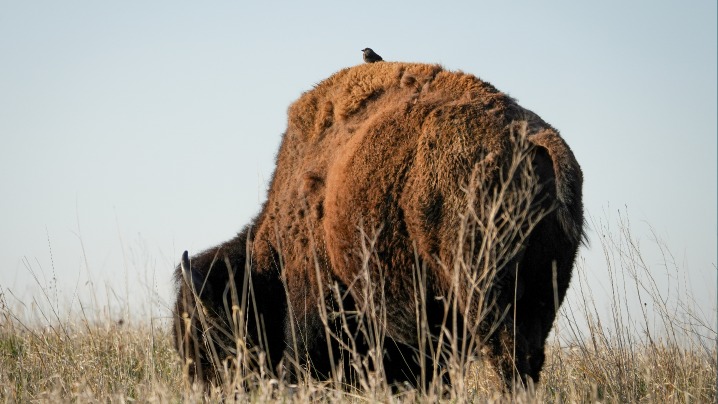
Roseman Covered Bridge
Winterset
Built in 1883, the Roseman Covered Bridge is one of the original 19 covered bridges in Madison County. Currently, there are only six. The bridge was added to the U.S. National Register of Historic Places in 1976.
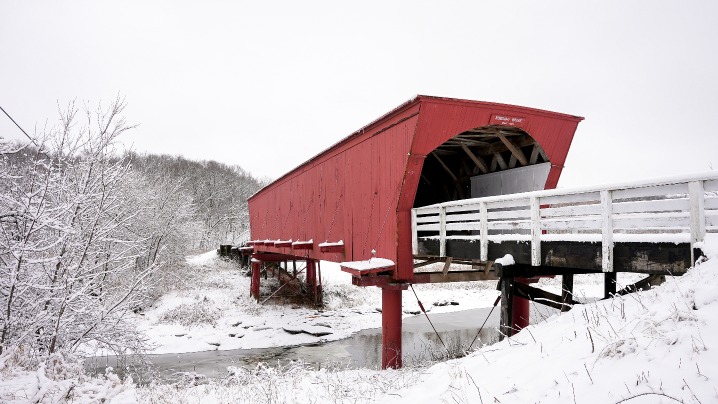
Maquoketa Caves State Park
Maquoketa
One of Iowa’s most unique parks, the Maquoketa Caves State Park in eastern Iowa has more caves than any other park in the state. The park’s 16 caves vary in size. While some are walkable, others can only be experienced by crawling. Hikers can enjoy a six-mile network of trails that lead to the caves, across a natural bridge, along the edge of scenic bluffs and around the 17-ton “Balancing Rock.” When exploring the caves, it is recommended you bring a flashlight and wear shoes and clothing that you don’t mind getting dirty.
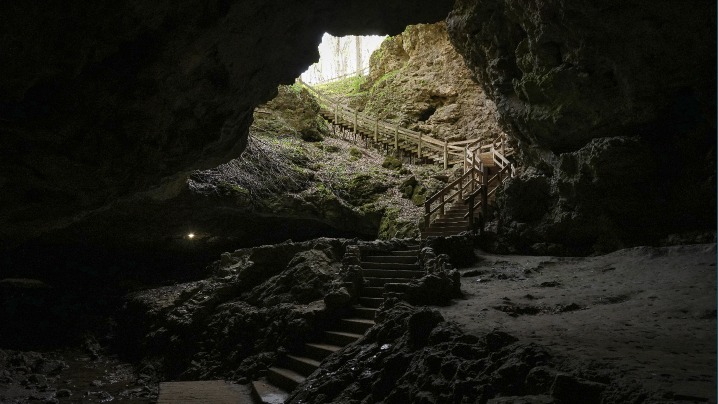
Loess Hills
Honey Creek
The Loess Hills (pronounced Luss) stretch from Northwest Iowa all the way along down to Missouri along the Missouri River. The hills are a formation of wind-deposited Loess soil, formed shortly after the last Ice Age.
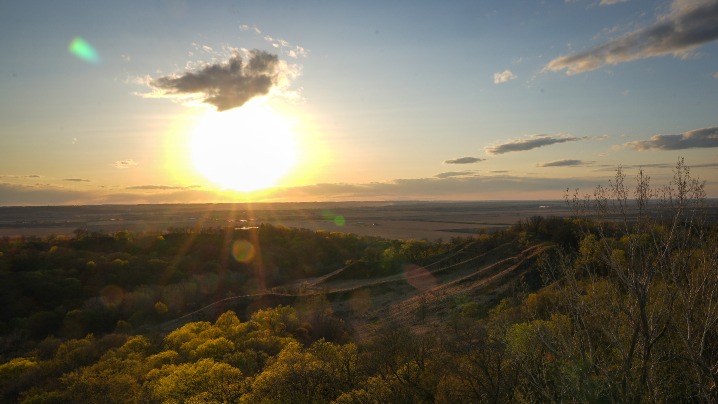
Amish in Iowa
Various
In some counties throughout Iowa, it’s not uncommon to find yourself sharing the road with a horse and buggy. As you pass by, you’re certain to be greeted with a friendly wave. The Amish have been in areas of Iowa well before the Hawkeye State was established in 1846. The first Amish to settle in the Iowa territory was in 1840, in what is now Lee County. The oldest Amish settlement is Kalona, which was established in 1846. While the Amish are known for their hard working, conservative lifestyle and reluctance to use modern technology, there are actually a wide range of orders that allow for modern conveniences.
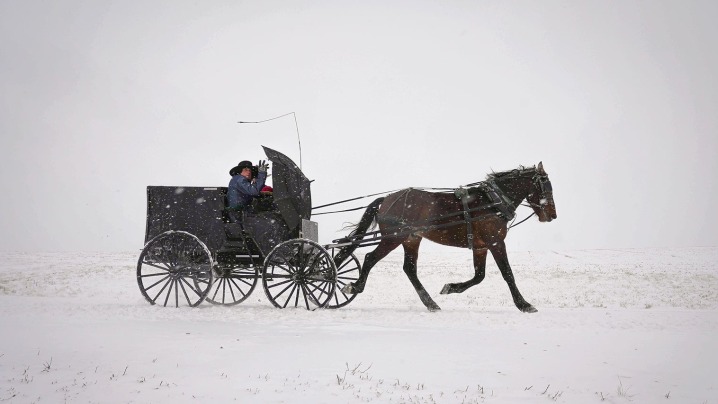
American Gothic House
Eldon
In 1930, shortly after visiting the town of Eldon to gather inspiration, Iowa artist Grant Wood was inspired by the gothic architecture of an upstairs window frame and used the house as a backdrop in a painting that would capture a global audience. The house was added to the U.S. National Register of Historic Places in 1974.
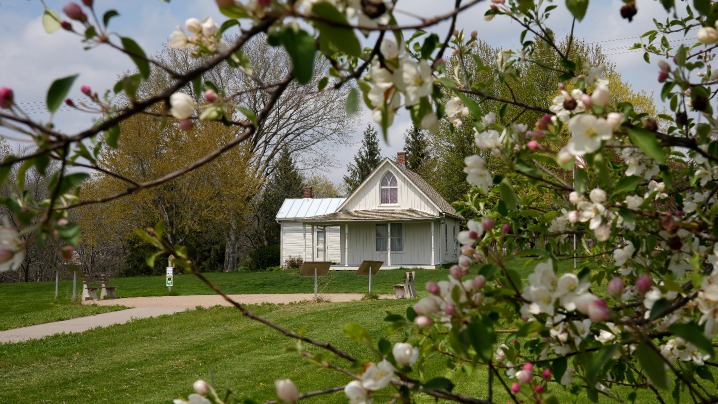
Iowa Capitol Building
Des Moines
Iowa’s State Capitol was moved to Des Moines in 1857, but the current building on Grand Avenue wasn’t completed until 1886. It is the only five-domed capitol building in the country. The bricks used in construction are all made out of limestone from Iowa. The full moon occurs every 29.5 days.
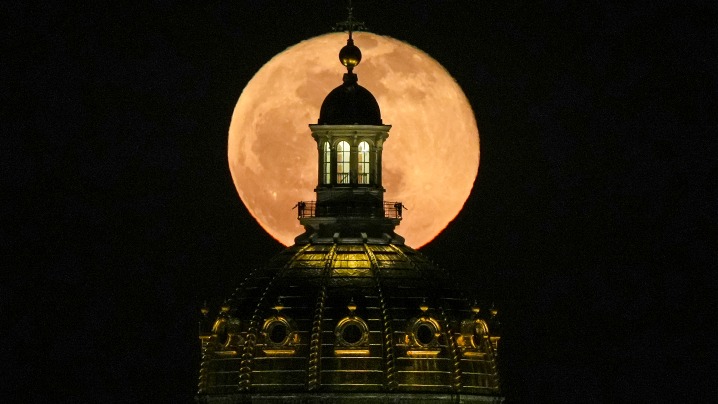
River’s Edge Pavilion and Bob Kerrey Pedestrian Bridge
Council Bluffs
The Bob Kerrey walking bridge that connects Council Bluffs and Omaha, with its graceful curvature and tall twin spires, was voted by Travel+Leisure Magazine as one of the world’s most beautiful pedestrian bridges. The 3,700-foot bridge starts in Iowa at the RIver’s Edge Park, where a 33-foot aluminum humanoid sculpture, titled Looking Up, stares upward into the sky over western Iowa. The River’s Edge Pavilion offers space birthdays and events, and includes a rooftop area that offers picturesque views of Omaha reflecting off the waters of the Missouri River.
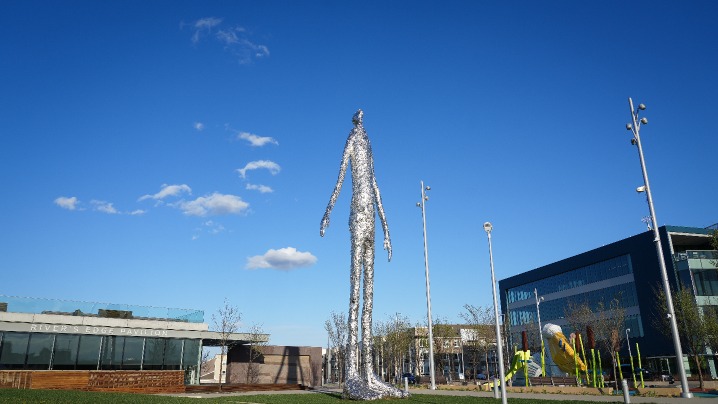
Iowa State Fair
Des Moines
Each August more than a million people converge in Des Moines to attend one of the oldest and largest agricultural and industrial events in the world: The Iowa State Fair. The fair, often regarded as one of the best state fairs in the country, began in 1854 during a two-day event in Fairfield. Over the following two decades the location changed before permanently settling in Des Moines in 1886. The fairgrounds span 450 acres, which include the campground. The Iowa State Fair offers plenty for all ranges of interest. If fried foods, butter sculptures, giant slides, animals, live music, politics or husband calling contests are your thing, be sure to mark your calendar for some time in Des Moines in August.
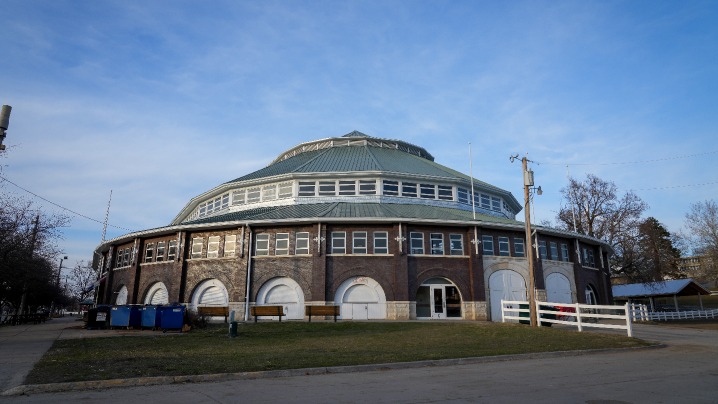
Robert D. Ray Asian Gardens
Des Moines
Along the northern edge of the Des Moines River, the Asian Gardens, featuring a large Asian pavilion and stone pagodas, serves as a monument to Iowa Gov. Robert D. Ray and his outreach efforts during the refugee crisis in the 1970s. Ray’s genuine compassion and welcoming of thousands of refugees from countries in Southeast Asia who were being displaced from their homes during the Vietnam War inspired a nation, and his compassion is still felt today by the Des Moines Asian community. The Gardens showcase the importance of diversity and acknowledge the contributions made by the Asian American community in Iowa.
